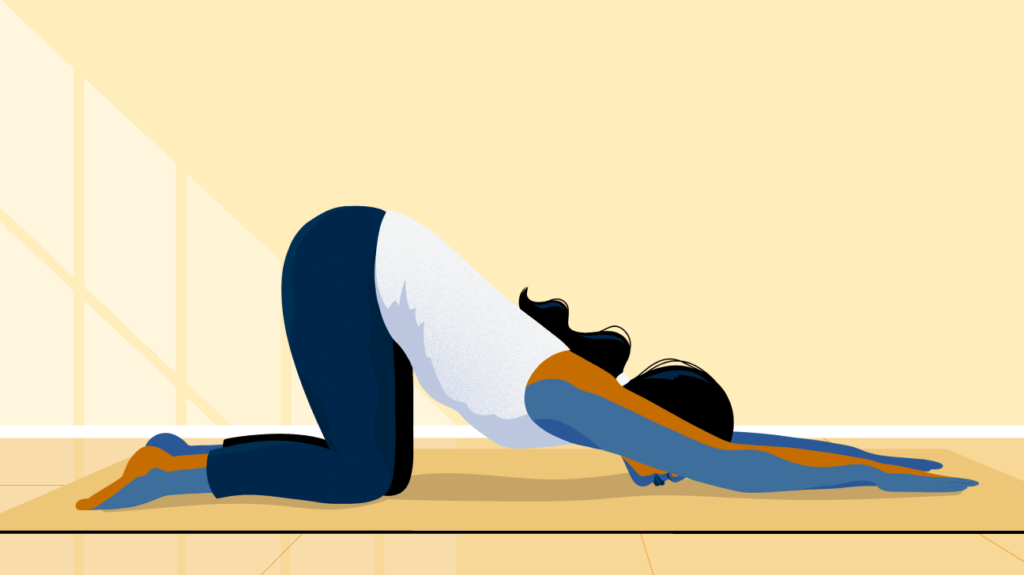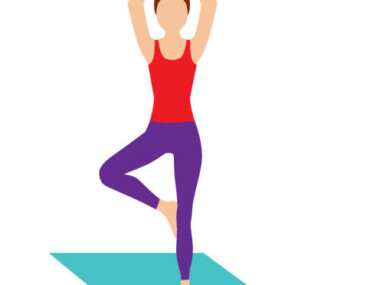You will agree that at some point in time, we all experience anxiety. This anxiety is sometimes mild to sheer panic. Though anxiety is natural and a response to stressful situations, it can become an Anxiety Disorder when one feels it hinders daily lifestyle.
If you are dealing with Anxiety and want to come over it. Here is a perfect blog to guide you on how yoga can help treat anxiety disorder.
What Is Anxiety Disorder?
When one encounters the feeling of nervousness, fear, and panic, and those feelings affect your routine is termed an Anxiety Disorder. A person can also experience a pounding heart and sweat.
Though it is normal to have anxiety sometimes, it arises when you are going to do something meaningful, and at that time, anxiety is beneficial. Anxiety helps us to notice dangerous situations by staying alert.
But when the anxiety goes beyond the nervousness, and you may encounter fear from time to time, it is known as Anxiety Disorder. A few signs of Anxiety Disorder are
- It interferes with your ability to function.
- You tend to overreact when something triggers your emotions.
- You do not have control over your responses.
Types Of Anxiety Disorders
1. Generalised Anxiety Disorder
There are times when one may feel extreme and unrealistic worry, even when there is nothing to trigger about. You may worry about health, work, and relationships, and it continues from one to another. These symptoms give rise to restlessness, sleeping issues, and difficulty concentrating.
2. Panic Disorder
Panic Disorder has more intense feelings than any other disorder. These feelings can come from triggers. In this situation, there are chances of a heart attack. During a panic attack, you may experience sweating, chest pain, heart palpitations, feeling of choking.
3. Phobias
When you fear particular objects or situations; these fear can be from animals, blood, flying, height, injections, etc.
4. Separation Anxiety
It happens mostly in children when they fear living away from their parents. They feel that their parents will not return as promised.
5. Social Anxiety Disorder
When you worry about how others judge you. You are in tension about what if you embarrass yourself; thus, people with social anxiety avoid social situations.
How To Diagnose Anxiety Disorders?
There are certainly no lab tests or scans that will diagnose Anxiety Disorder. But talk to your healthcare provider if you see any Anxiety symptoms. Your health provider may run a test to rule out any physical condition causing symptoms.
If there is no sort of physical illness, then they may refer you to a psychiatrist or psychologist. They are experts in diagnosing mental illness. They may design an interview or assess you with various tools to figure out anxiety disorder.
Treating Anxiety Disorders With Yoga
Most people turn to yoga to find peace and remove the anxiety they are experiencing. Focusing on your breath and each poses you do will help you quiet the mental chatter and boost your overall mood.
A study reveals that practicing one or more postures can help you to have a significant positive impact on your health. Feel and jot down every emotion you may encounter with each pose. If your thoughts are going haywire, bring your mind to the mat and continue your practice.
Yoga therapy will give you additional support, which will help to regulate your stress response, increase resilience, and manage your anxiety.
Here is a list of five fantastic Yoga poses that will act as anxiety busters:
Five Amazing Yoga Poses
These poses are a great way to bust the anxiety and keep you calm. While performing these poses, just focus on your breath and feel the stillness in every pose. Every pose will help to release the tension your body might be facing.
You need to be particular with the various position of different poses. Always be sure that a consistent yoga practice will take you to the ocean of benefits, so always be present on the mat.
1. Hero Pose
- Get into the kneeling position. Keep your knees close and your feet wider than your hips.
- Keep the top of your feet flat.
- Place your hands on y our thighs.
- Sit up straight and open your chest, keeping your spine strengthened.
- Hold the pose for five minutes.
2. Tree Pose
- Stand straight.
- Keep your right foot on the left inner thigh; the weight should be on one leg.
- Avoid pressing your foot into the knee
- Keep your hands in the praying position; you can stretch them upwards or keep them close to your chest.
- Hold the pose for two minutes.
- Now try with the other leg.
3. Standing Forward Bend
- Stand with your feet apart at the hip-width. Keep your hands at the side of your body.
- Bend on your knees and drop your hands on the floor.
- Tuck your chin into your chest
- Release all the tension from your back and hips.
- Your head and neck should hang heavy towards the floor.
- Hold the pose for at least a minute.
4. Child’s Pose
- Come on your knees and sink back onto your heels.
- Keep your hands in front and fold forward.
- Allow your torso to fall heavy into your thighs and rest your forehead on the floor.
- Now, keep your arms alongside your body. Make sure you do not encounter any pressure.
- You can hold the pose for five minutes.
5. Legs up the wall Pose
The restorative pose completely relaxes your mind and body.
- Sit against the wall.
- Lie back and swing your legs up along the wall.
- Your buttocks should be as close to the wall as it is comfortable for you. It could be a few inches away from the wall.
- Allow your body to melt into the floor and relax, be in the moment.
- Hold the pose for up to ten minutes.
Yoga Tips To Overcome Anxiety
- Try to do the yoga postures with perfection, it will help you to attain the maximum benefit.
- Every pose you skillfully do will flush out the toxins from your body, leaving you happy and healthy.
- Pay attention to your breath and free your mind from unnecessary thoughts.
- Try meditation; it is an excellent technique to keep you away from distractions and calm your mind and relax.
- Enjoy the little things in your life and be grateful.
- Do not worry too much and get anxious about the unknown future.
- Apply yoga philosophy in your life and practice cleansing your mind and body.
- Do not stick yourself in me and mine. Try to think about what you can do for others.
- Understand everything is temporary, so just sit back and relax.
- Have faith.
Wrapping Up
If you are suffering from anxiety, talk to your doctor before starting yoga sessions. Identify the possible risks and modifications needed according to your health. Remember that your yoga practice gives you the comfort you are looking for. Also, find a perfect place for meditation that is safe and helps you with healing. You can always join a yoga class or practice it at home.
If you feel that yoga is causing you any sort of discomfort, then discontinue it. Remember that you can easily overcome anxiety, and soon you will.
Practice Yoga And Stay Consistent!




